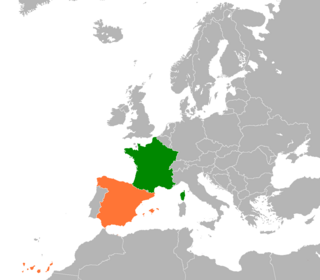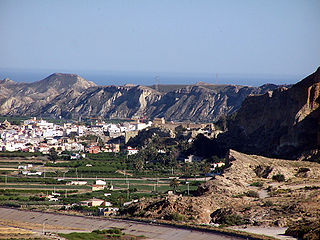
As of 1 January 2020, Spain had a total population of 47,431,256, which represents a 0.9% increase since 2019. The modern Kingdom of Spain arose from the accretion of several independent Iberian realms, including the Kingdoms of León, Castile, Navarre, the Crown of Aragon and Granada, all of which, together with the modern state of Portugal, were successor states to the late antique Christian Visigothic Kingdom after the Reconquista.

Chile's 2017 census reported a population of 17,574,003 people. Its rate of population growth has been decreasing since 1990, due to a declining birth rate. By 2050 the population is expected to reach approximately 20.2 million people, at which it is projected to either stagnate or begin declining. About 85% of the country's population lives in urban areas, with 40% living in Greater Santiago. The largest agglomerations according to the 2002 census are Greater Santiago with 5.6 million people, Greater Concepción with 861,000 and Greater Valparaíso with 824,000.

Spaniards, or Spanish people, are an ethnic group native to Spain. Within Spain, there are a number of national and regional ethnic identities that reflect the country's complex history, including a number of different languages, both indigenous and local linguistic descendants of the Roman-imposed Latin language, of which Spanish is the largest and the only one that is official throughout the whole country.

France–Spain relations are bilateral relations between France and Spain, in which both share a long border across the Pyrenees, other than one point which is cut off by Andorra. As two of the most powerful kingdoms of the early modern era, France and Spain fought a 24-year war until the signing of the Treaty of the Pyrenees in 1659. The treaty was signed on Pheasant Island between the two nations, which has since been a condominium, changing its allegiances each six months.

Cuevas del Almanzora is a municipality of Almería province, in the autonomous community of Andalusia, Spain.

Colombians are people identified with the country of Colombia. This connection may be residential, legal, historical or cultural. For most Colombians, several of these connections exist and are collectively the source of their being Colombian.

Immigration to Spain increased significantly in the beginning of the 21st century. In 1998, immigrants accounted for 1.6% of the population, and by 2009, that number had jumped to above 12% — one of the highest in Europe at the time. Until 2014, the numbers were decreasing due to the economic crisis, but since then, immigration to Spain has increased again since 2015, especially after 2021.
Indians in Spain form one of the smaller populations of the Indian diaspora. According to the statistics of India's Ministry of External Affairs, they number only 35,000, or 0.07% of the population of Spain. 2009 statistics of Spain's Instituto Nacional de Estadística showed 35,686 Indian citizens in Spain; this figure does not include persons of Indian origin holding other citizenships. Most Indians originally migrated to Spain from Africa, while others came from India and even Japan and Southeast Asia. The overwhelming majority of Indians in Spain live in the Barcelona area. According to data from 2021, Indians in Spain number more than 57,000.

Spanish Mexicans are citizens or residents of Mexico who identify as Spanish as a result of nationality or recent ancestry. Spanish immigration to Mexico began in the early 1500s and spans to the present day. The vast majority of Mexicans have at least partial Spanish ancestry; the Northern regions of Mexico have a higher prevalence of Spanish heritage. There are three recognized large-scale Spanish immigration waves to the territory which is now Mexico: the first arrived during the colonial period, the second during the Porfiriato and the third after the Spanish Civil War.
Moroccans in Spain formed 16.4% of the 4,549,858 foreigners in Spain as of 1 January 2017. They are again the largest foreign group in Spain, after they were surpassed temporarily by Romanians in 2007. In 2003, they were estimated to make up about 6% of all Moroccans abroad.
Russians in Spain form one of the country's smaller foreign communities, making up about 0.83% of all foreigners in Spain.
As of 2018, official statistics showed 201,993 Peruvian-born residents in Spain. Out of these, 129,344 were Spanish citizens and 72,649 had not yet acquired Spanish citizenship. As of 2019, the number had increased to 218,129.
Romanians form the second largest group of foreigners in Spain, after Moroccans. As of 2022, there were 1,079,726 Romanians in Spain, of whom, 623,097 are Romanian citizens living in Spain. The number of Romanians born in Romania living in Spain was 539,418 in 2022. Most of the immigration took place given economic reasons. The linguistic similarities between Romanian and Spanish, as well as Romanians' Latin identity, are also a reason for the country's attractiveness to Romanians.
Iranians in Spain have a history going back for over a millennium and form a minor population in modern day. They are a part of the Iranian diaspora.

The Spanish diaspora consists of Spanish people and their descendants who emigrated from Spain. In the Americas, the term may refer to those of Spanish nationality living there; "Hispanic" is usually a more appropriate term to describe the general Spanish-speaking populations of the Americas together with those in Spain. The diaspora is concentrated in places that were part of the Spanish Empire. Countries with sizeable populations are Argentina, Bolivia, Chile, Colombia, Costa Rica, Cuba, Dominican Republic, Ecuador, El Salvador, Guatemala, Honduras, Mexico, Nicaragua, Panama, Paraguay, Peru, Uruguay, Venezuela, and, to a lesser extent, Brazil, Belize, Haiti, United States, Canada, the Philippines and the rest of Europe.

Argentines in Spain are the largest community of Argentines abroad. In Spain, they represent one of the largest immigrant groups in the country.

Dominicans in Spain from the Dominican Republic make up about 1.66% of all foreigners in Spain, this includes immigrants and people of Dominican descent born in Spain. The first country of destination for Dominicans in Europe is Spain, and it is the country with the most Dominican migrants outside of the United States.
Italians in Spain are one the largest communities of immigrant groups in Spain, with 228,283 Italian citizens in the country; conversely, 135,020 residents in Spain were born in Italy.











